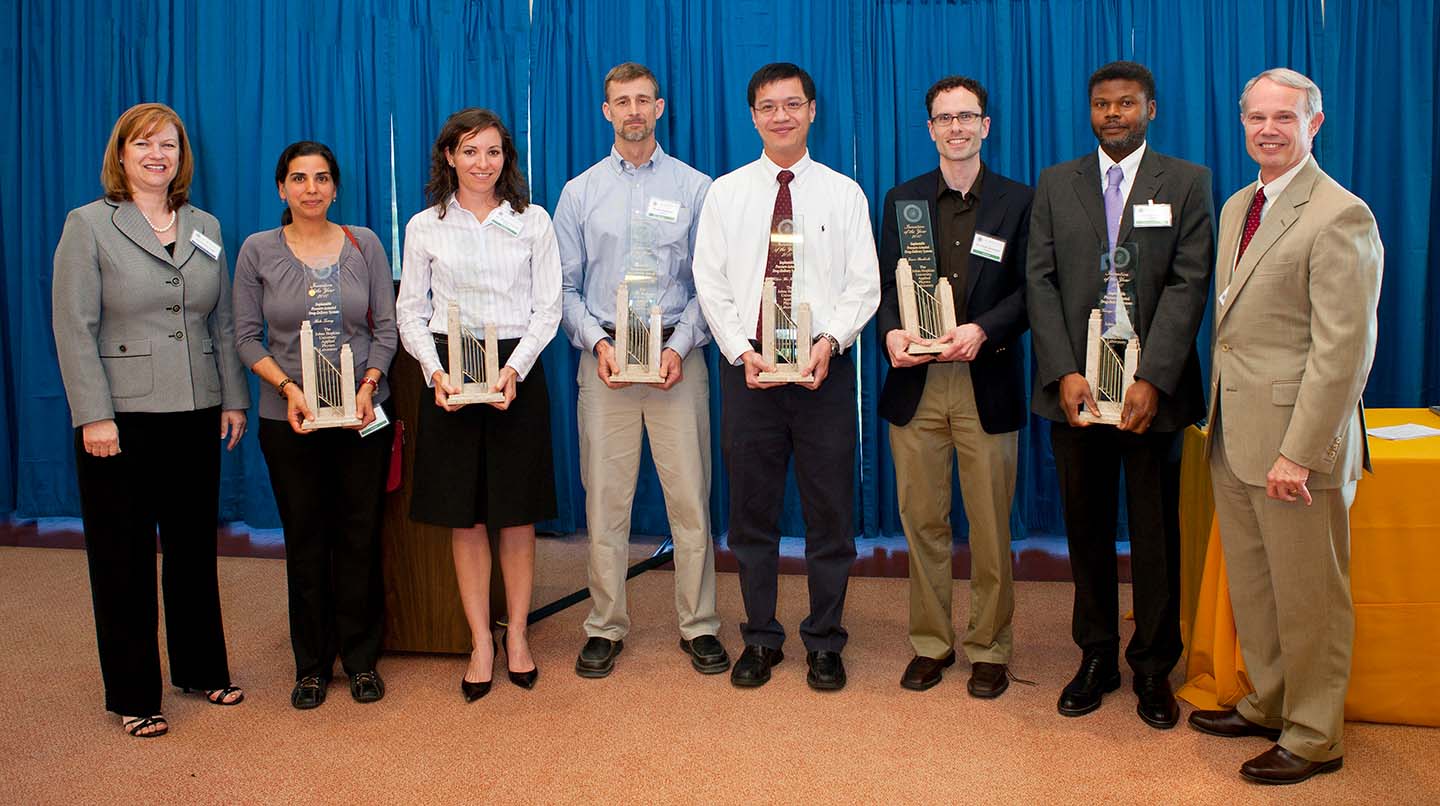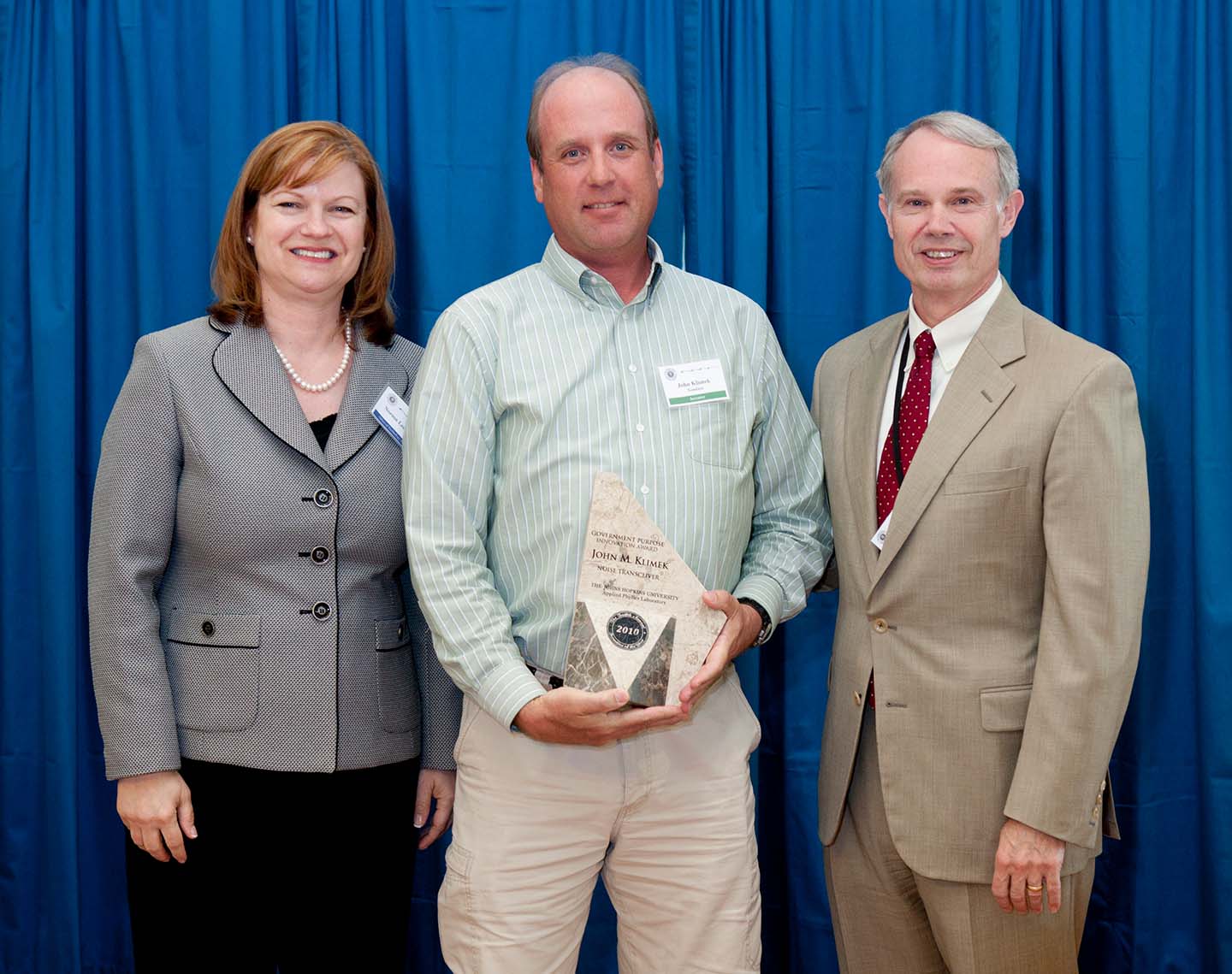Press Release
Johns Hopkins Applied Physics Lab Names 2010 Best Inventions
Medical and National Security Breakthroughs Share Top Honors
Thu, 05/12/2011 - 13:20
A novel way to monitor and treat hardening arteries from inside the body, and a clever method to provide covert monitoring and communications, are the winners of the Johns Hopkins University Applied Physics Laboratory’s Invention of the Year and Government Purpose Innovation awards for 2010.
This year’s winners were selected from 155 inventions that were disclosed at APL during the past calendar year, filed by more than 280 inventors. The Invention of the Year winner was chosen by an outside review panel of 30 representatives from industry, the high-tech sector and patent law. New this year is APL’s Government Purpose Innovation Award, intended to recognize an invention that has the potential to make a major impact within the Laboratory’s sponsor community.
The winners were named at the 12th annual Invention of the Year Award Reception, held May 10 on the APL campus in Laurel, Md. Attendees included Ralph Semmel, Director of APL, and representatives from state and local officials and agencies. APL Assistant Director for Science and Technology Jerry Krill and Office of Technology Transfer Supervisor Norma Lee Todd addressed the inventors and guests, and presented trophies and cash awards to the top inventors.
- Invention of the Year: Jason Benkoski, George Coles Jr., Chao-Wei Hwang, Robert Matteson III, Jon Resar, Hala Tomey and Morgana Trexler for Implantable Pressure-Actuated Drug-Delivery Systems. These systems modify stents, the devices inserted to reopen and protect arteries suffering from atheriosclerosis (“hardening of the arteries”). A microchip that contains a pressure sensor and a diaphragm filled with drugs is placed within the stent; when the sensor detects a predetermined change in blood pressure — such as during a heart attack — the microchip automatically delivers blood-thinning drugs intravenously. This invention is the result of a collaborative effort between the Johns Hopkins University School of Medicine and APL.
- Government Purpose Innovation Award: John Klimek for Naturally Occurring Indigenous Sound Emulation (NOISE). NOISE uses modified bioacoustic sounds produced by species native to specific areas — birds, insects, small mammals — to create a communication network that can covertly record and report complex data on activity and terrain. Klimek says he got the idea one summer while sitting outside his house and listening to bugs and birds communicating.
“These two award-winning inventions really demonstrate the spectrum of curiosity and capability that APL’s staff is renowned for,” says Todd. “The purpose of tonight’s celebration was to recognize and reward some of the best new ideas and innovation emerging from the Lab. In addition to the winners, each of this year’s nominees possesses tremendous potential to have a commercial impact or make a critical contribution to our national security.”

